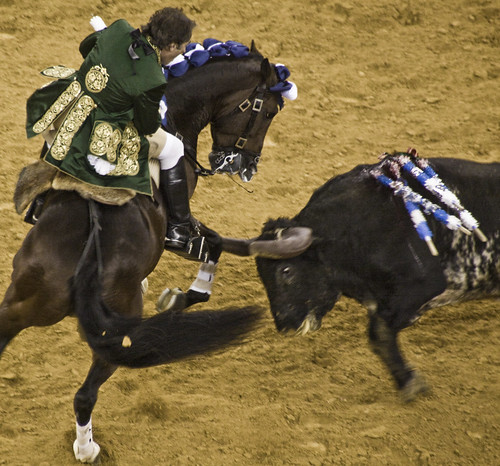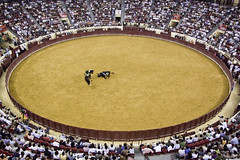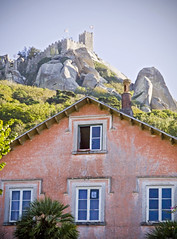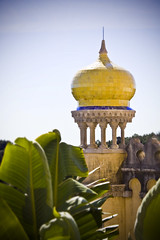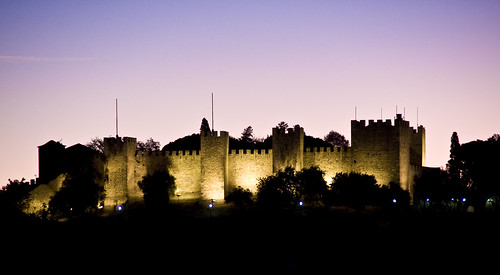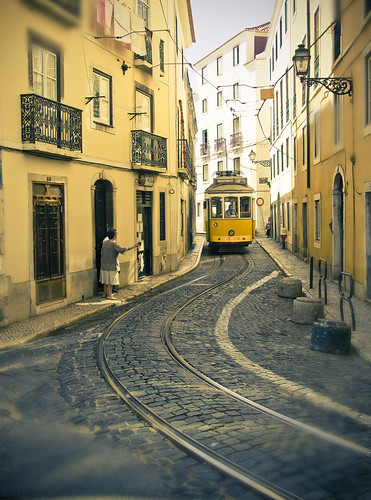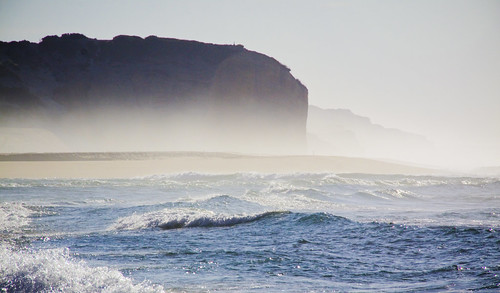
Portugal has the worst drivers in all of western Europe, or so everyone keeps telling us. So, what did we do? We rented a car for the weekend to head north up the coast to Porto.
Without the time constraints of a bus or train schedule, we were able to see many things in a short time span. We hit the picturesque medieval city of Obidos, where we wandered up and down the narrow cobblestone streets. Then, on a whim, we stopped in Foz de Arehlo. It turned out to have an amazing beach that stretched out into a sheltered bay on one side and bordered the Atlantic on the other.
We stayed on the coastal roads and ended up in Sao Martinho do Porto, a beach town situated on a crescent-shape bay that was full of fishing boats. For a Friday night, things were pretty quiet. Being the off season, many things were closed and there were only three lodging options available in town. We stayed one block from the beach for 40€ ($60).
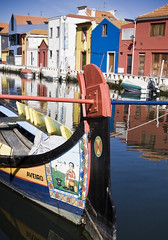 The next morning, we made our way to Aveiro, the "Venice of Portugal" where we navigated the canals in an old, brightly painted wooden boat.
The next morning, we made our way to Aveiro, the "Venice of Portugal" where we navigated the canals in an old, brightly painted wooden boat.We also learned how to make ovos moles, the sweet treats that were invented here. As the story goes, the nuns at the convent would use egg whites to starch their habits, but they were wasting the yolks. By adding sugar, they were able to preserve the yolks for up to three weeks and use the concoction for eating. These days, the mixture is encased in a pillow-like shell similar in taste and texture to a communion wafer.
 From Aveiro, we drove up to Porto, where we saw the sun set on the River of Gold (Rio d'Ouro), bathing the river and buildings alongside it in golden light. One can see how the river got its name.
From Aveiro, we drove up to Porto, where we saw the sun set on the River of Gold (Rio d'Ouro), bathing the river and buildings alongside it in golden light. One can see how the river got its name.On Sunday, we headed to Fatima, an important Christian pilgrimage site in a city named after the daughter of Mohammed. Thousands of worshippers come to this location, many of whom walk on their knees to the chapel built over the location where Mary first appeared to three children in 1917. The apparition returned two more times, each time relaying prophecies about the future that later came true.
We came back to Lisbon later that night. Happily, we returned the vehicle, and ourselves, in one piece. However, there was one point on our trip that an ambulance (not on an emergency call) crossed over the center lane on a curve and nearly crashed into the car head on.
"So, that's how they get clients," said Jennifer, after our close call.
Perhaps our visit to Fatima gave us some good karma.

